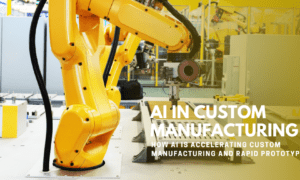Artificial intelligence (AI) has emerged as one of the most transformative forces in modern technology, with generative AI driving much of its recent surge in popularity. While AI itself is not a new concept—having been around for decades [1]—it is the recent advancements in generative AI that have pushed it into the limelight. These developments represent a significant leap beyond AI’s traditional use for tasks like predictive analytics and pattern recognition. As AI’s capabilities evolve, its implications reach far beyond software development, with substantial effects on various industries, particularly the data center sector [2].
The rise of AI has sparked a revolution akin to the rapid expansion seen during the Internet boom, catching many infrastructure manufacturers off guard. The need for greater computational power to support AI has created both opportunities and challenges within the data center industry, which finds itself unprepared for the scale of this demand. While the AI revolution has fueled exponential growth in the sector, it has also presented several complex issues that require immediate attention.
Key Impacts of AI on the Data Center Industry
1) Increased Power Consumption
AI applications, particularly those relying on high-performance computing (HPC), require significant processing power to function effectively. As processors evolve and their capacities expand, so too does the energy demand, which in turn escalates the power consumption of data centers. While data centers have always been energy-intensive, the rise of AI has exacerbated this issue. For context, a typical standard rack in a data center consumes between 5 kW and 10 kW, while an HPC rack can demand as much as 85 kW [3]. This substantial increase in power consumption has placed additional strain on infrastructure, prompting industry leaders to seek sustainable solutions. Among the most discussed options is the use of modular nuclear reactors, which can generate large amounts of power efficiently. However, the environmental benefits of such solutions remain debated, and we will refrain from delving into this matter further in this article.
2) Heightened Cooling Demands
Cooling is a fundamental aspect of any data center, as all IT equipment generates heat during operation. If this heat is not efficiently removed, the temperature within the facility can rise to levels that jeopardize the performance of critical systems. All IT equipment has specific temperature ranges within which it must operate, as outlined by ASHRAE standards [4]. The higher power consumption required for HPC racks directly translates into more heat, which intensifies cooling requirements. The cooling process itself is often the most energy-intensive operation within a data center, and finding ways to optimize its efficiency remains a significant challenge. Over the past decade, various innovative solutions, such as liquid and immersion cooling systems, have been developed to address this issue, but there is still considerable work to be done to make cooling systems more energy efficient.
3) Strain on Power Capacity Availability
As AI data centers demand increasingly larger amounts of power, utility providers are struggling to keep up with these growing requirements [5]. This has led to delays in getting data centers up and running, as the necessary power infrastructure is often not readily available. In the data center industry, speed to market is critical, as the applications that these facilities support require rapid deployment. The challenge of ensuring an adequate and reliable power supply has become a significant bottleneck, slowing down the construction and operational readiness of new data centers.
4) Gap Between AI Demand and Hardware Capability
The surging demand for AI applications has revealed the limitations of existing computer processors, highlighting the need for further advancements in this technology. While the industry has seen promising breakthroughs—such as NVIDIA’s DGX chips and Microsoft’s newly launched Majorana quantum chip—these innovations are still in the early stages of meeting the enormous demand for processing power [6]. As AI technologies continue to evolve, the gap between current hardware capabilities and the needs of AI applications will become more pronounced, necessitating further breakthroughs in both processor design and manufacturing processes.
5) Environmental Concerns Linked to Energy Consumption
The environmental impact of AI-driven power consumption is a growing concern, especially as the majority of the electricity supplied by utility providers still comes from non-renewable sources like fossil fuels. As AI data centers expand, their increasing energy consumption could offset efforts made by the industry to reduce its overall carbon footprint. While initiatives like modular nuclear reactors are being explored as a potential solution to meet the power needs of AI-driven data centers, the environmental implications of such technologies remain a subject of debate. Furthermore, the industry continues to invest in research and development aimed at identifying sustainable and low-carbon alternatives to meet the growing energy demands of AI.
Conclusion
The AI revolution is reshaping the landscape of the data center industry, presenting both new opportunities and complex challenges. As AI applications become more pervasive, data centers must evolve to meet the growing demands for power, cooling, and processing capacity. Industry leaders are actively exploring innovative solutions to address these challenges, but it is clear that the AI revolution will require significant investment in both infrastructure and technology. As this transformation continues, finding a balance between performance, energy efficiency, and environmental sustainability will be key to ensuring the long-term success of the AI-driven data center industry.
Cited works:
- Tableau. (n.d.). History of AI. Tableau.
- Data Center Frontier. (2025, February 4). How AI’s transformative impact on data centers is driving … Data Center Frontier.
- TierPoint. (n.d.). Data center power density. TierPoint.
- Upsite Technologies. (2025, February 11). Part 2: Specifying A1, A2, A3, or A4 servers. FaviconUpsite.
- MarketWatch. (2025, February 26). AI’s power demands spark new joint GE Vernova-NRG electricity plant project. FaviconMarketWatch.
- RD World Online. (2025, February 20). This week, Nvidia rebounds, Microsoft heats up quantum market and …. FaviconRD World Online.



































